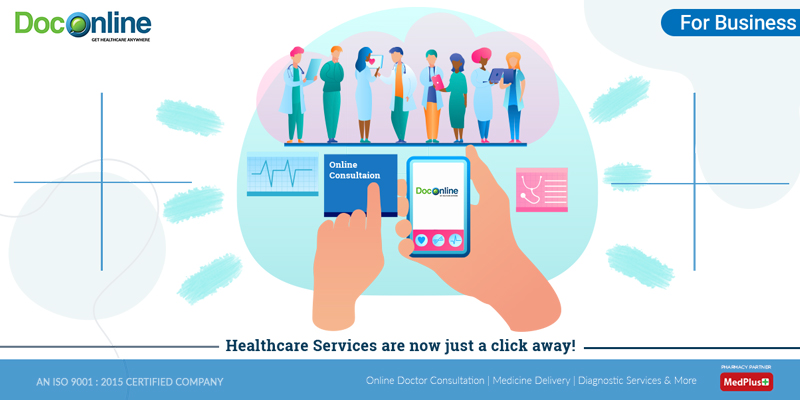Opening the Keys of Subscription Based Healthcare for Better Patient Outcomes
Opening the Keys of Subscription Based Healthcare for Better Patient Outcomes
Blog Article
Understanding the Cost-Effectiveness of Subscription-Based Health Care Models
As the health care landscape evolves, subscription-based designs become a compelling option, assuring to redefine exactly how people manage medical expenditures. Evaluating these designs' cost-effectiveness demands a nuanced comparison with conventional insurance policy, taking into consideration both monetary ramifications and individual contentment. While they provide openness and predictability in costs, concerns continue to be concerning their ability to satisfy varied medical care needs, especially for specialized treatments. The viewpoints of doctor additionally complicate this formula, presenting a multifaceted difficulty. What does the future hold for these versions, and can they absolutely deliver on their guarantee of accessible, cost effective treatment?
Review of Subscription-Based Versions
Subscription-based medical care designs, in some cases referred to as direct health care or attendant medicine, are increasingly gaining focus as a possible option to ineffectiveness within conventional healthcare systems. These versions operate the principle of offering patients straight access to doctor via a yearly or month-to-month charge, bypassing the need for typical insurance coverage mechanisms. This setup aims to streamline patient-provider communications by decreasing administrative problems, which typically hinder tailored and timely treatment.
At the core of subscription-based designs is the emphasis on a much more personalized individual experience. Clients gain from enhanced accessibility to their physicians, commonly including next-day or same-day appointments, expanded assessment times, and straight communication channels such as phone or video clip calls. This design fosters a positive strategy to health care, where carriers and clients can collaboratively concentrate on preventative care and chronic illness monitoring.

Cost Comparison With Standard Insurance Policy

One of the primary monetary advantages of membership designs is openness in expenses. Individuals pay a foreseeable cost, which can streamline budgeting and economic preparation. In addition, these versions commonly remove co-pays and deductibles for protected solutions, lowering out-of-pocket investing. Alternatively, typical insurance policy might be a lot more helpful for people needing specialized care or expensive treatments not covered under a registration version, as they profit from the wider protection network and cost-sharing mechanisms.
However, cost-effectiveness is context-dependent. While registration designs could provide savings for those mostly needing health care, individuals with chronic conditions or specialized health care needs could find standard insurance extra extensive. Evaluating certain medical care requirements and prospective use is crucial in identifying the most cost-efficient option for people.
Effect On Client Fulfillment
Client complete satisfaction within subscription-based healthcare versions usually mirrors a substantial enhancement over conventional insurance systems. Unlike traditional systems, where patients could experience hold-ups in receiving treatment, subscription-based versions make sure more timely and straight communications with health care service providers.
Moreover, the openness in expenses associated with subscription-based medical care eases the typical aggravations connected to unforeseen fees and intricate invoicing processes seen her latest blog in standard insurance (subscription based healthcare). People value knowing the specific financial dedication upfront, resulting in raised count on and self-confidence in their health care management
Furthermore, the focus on preventive treatment and wellness in membership models adds to improved health and wellness end results, even more boosting client contentment. By concentrating on continuous health maintenance instead of episodic care, individuals experience a more alternative and continual medical care journey.
Additionally, the boosted provider-patient relationship promoted in these designs, identified by more time spent per individual and tailored attention, plays a vital duty in elevating client fulfillment degrees, as patients feel genuinely taken care of and recognized.
Carrier Experiences and perspectives
From the company's point of view, subscription-based medical care models offer a transformative method to providing medical services. These designs highlight a preventative and aggressive medical care approach, permitting service browse this site providers to focus on extensive client care without the constraints of conventional fee-for-service plans (subscription based healthcare). This shift in focus often results in improved person end results and raised carrier contentment, as medical care specialists can designate more time and resources to patient interaction and individualized treatment strategies
Furthermore, subscription models promote foreseeable profits streams, which improve financial security for doctor. This predictability allows for improved source planning and allocation, adding to a much more efficient medical care shipment system. Service providers can buy team infrastructure, training, and modern technology enhancements, thereby boosting the quality of treatment offered.
Nonetheless, the transition to subscription-based versions is not without challenges. Carriers should adjust to new functional structures, which can include substantial changes in payment practices and individual management systems. Furthermore, there is an integral need for durable information management to track individual end results and guarantee high quality treatment. Despite these obstacles, several service providers discover that the advantages of increased individual communication and structured operations outweigh the preliminary obstacles, making subscription-based models an attractive choice.
Future Potential Customers and Difficulties

A key obstacle is regulative compliance, as registration designs should follow advancing health care policies and insurance policy demands. This necessitates continual adjustment and innovation to make certain positioning with legal criteria. Furthermore, incorporating these designs into existing health care infrastructures can be intricate, needing substantial investments in modern technology and training.
There is likewise the possible threat of producing injustices in healthcare accessibility, as subscription versions might prefer those who can afford them, leaving at risk populations underserved. Resolving this requires thoughtful factor to consider of pricing methods and aid mechanisms to make sure inclusivity.
Conclusion
Subscription-based health care designs provide a feasible choice to typical insurance policy by supplying economic predictability and openness, specifically profiting people with persistent problems or regular health care requirements. The cost-effectiveness of these designs is contingent upon private health care usage patterns and situations.
Subscription-based healthcare models, sometimes referred to as direct key treatment or attendant medicine, are increasingly gaining attention as a possible remedy to inadequacies within standard health care systems. Unlike conventional systems, where patients might experience hold-ups in getting care, subscription-based versions make sure more timely and direct communications with health care suppliers.
These designs emphasize a preventative and positive healthcare approach, enabling companies to focus on thorough individual care without the restraints of standard fee-for-service arrangements. As these versions continue to obtain traction, they offer the prospective to transform person access to care, streamline service delivery, and enhance healthcare costs.Subscription-based healthcare designs present a feasible alternative to standard insurance by using financial predictability and openness, particularly benefiting people with chronic conditions or constant healthcare demands.
Report this page